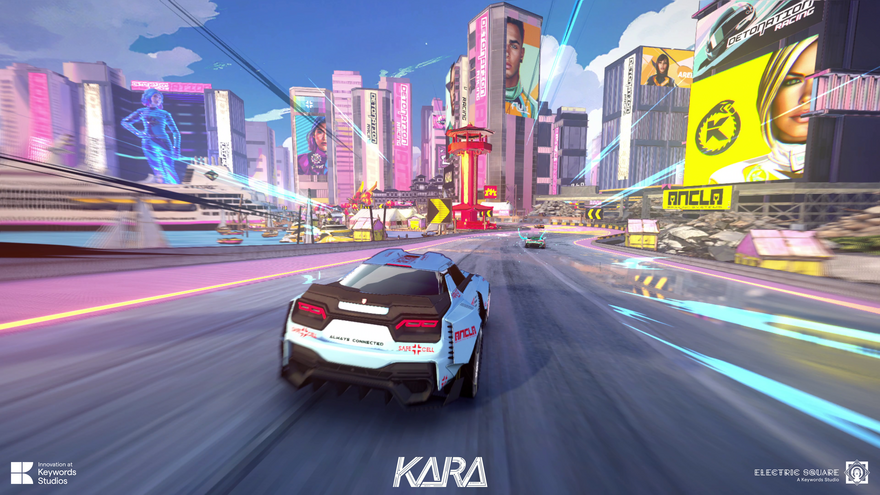Remastering the Past: A Look at the Enduring Appeal of Remakes and Remasters
The video game industry has always had a fascination with its own history, but in recent years, remasters and remakes have steadily become a staple choice for developers looking at safer options to bet the farm on. From faithful recreations to complete overhauls, these updated classics are not just nostalgic trips; they’re big business, captivating new generations of players and re-engaging old ones.

The Power of Nostalgia and New Audiences
One of the most obvious drivers behind the success of remasters and remakes is nostalgia. For many players, these games represent cherished memories, and the opportunity to revisit them with modern graphics and improved gameplay is incredibly appealing.
Take for example, the recent success of the Final Fantasy VII Remake. While it wasn’t a direct 1:1 remake (the game is split into a trilogy of parts), its reimagining of the beloved classic captivated both long-time fans and newcomers, boosting lifetime sales for the title to over 15 million units as of June 2025.
However, it’s not just about nostalgia. These updated titles often introduce classic games to a generation of players who might have missed them the first time around. Improved accessibility features, modernized controls, and enhanced visuals can make historically challenging or dated games much more approachable.
Portraying games in their best light: What are some of the features that differentiate remasters and remakes?
| Feature | Remaster | Remake |
|---|---|---|
| Development | Updates an existing game | Rebuilds the game from scratch |
| Source Code | Uses and tweaks the original code | Uses a new code and engine |
| Graphics & Assets | Enhances and upscales existing assets | Creates all-new models, textures, and environments |
| Gameplay | Core mechanics are largely unchanged | Gameplay can be modernized or completely overhauled |
| Story & Content | Story and levels are the same as the original | Can add new content, expand the story, or change elements |
| Goal | Preservation and accessibility | Reimagination and modernization |
A client recently described the feeling of a remake vs. a remaster like this:
Sales Speak Volumes: A Booming Market
The financial success of remasters and remakes is undeniable.
Capcom in particular has found immense success with its Resident Evil remakes. Resident Evil 2 Remake, released in 2019, has sold over 13.9 million units as of Q3 2024, while Resident Evil 4 Remake (2023) crossed 5 million units four months after release.
These numbers highlight the strong player engagement and willingness to invest in these revamped experiences.
Image credit: Resident Evil 4 by Capcom

Different Types of Video Game Remasters
While the general definition of a remaster is to update visuals and performance, there is a spectrum of effort and changes that can be made.
These “types” aren’t official classifications, but rather a way to describe the varying degrees of work involved:
1. Simple HD Port/Upscale
A game’s resolution is ‘simply’ increased to HD or 4K, and it might include minor performance improvements like a more stable frame rate. Very little, if any, work is done on the original assets.
- Examples include: Final Fantasy X/X-2 HD Remaster and Zelda: Skyward Sword HD
2. Visual and Performance Enhancements
The most common type of remaster involving more significant work, such as high-resolution textures, improved lighting, better shadows, and updated character models. Developers might also add quality-of-life improvements.
- Examples include: Dark Souls Remastered, Crysis Remastered, and Halo: The Master Chief Collection
3. ”Visual Remake” or “Re-skin” Remaster
This is the high end of remasters, blurring the line with remakes. The game is built on the original’s core structure and code, but the visual assets are completely replaced with new, modern ones. This is sometimes called a “re-skin” because it’s the original game with a brand new “skin.“
- Examples include: Metroid Prime Remastered and Crash Bandicoot N. Sane Trilogy
Fan-Favourite Features Redefining Classic Games
What makes a good remaster or remake? Player discussions often revolve around several key features:
- Graphical Overhauls: This is often the most noticeable change. Modernizing character models, environments, lighting, and textures can transform a game’s visual appeal. The difference between the original Demon’s Souls on PS3 and its PS5 remake is a prime example of this.
- Quality of Life Improvements: These can include updated UI, better camera controls, fast travel systems, and more forgiving save mechanics. While purists might argue against some changes, these often make older games more enjoyable for a contemporary audience.
- Expanded Content: Some remakes, like Final Fantasy VII Remake, go beyond simple visual upgrades, expanding the story, introducing new gameplay mechanics, or adding side quests that weren’t present in the original.
- Fidelity vs. Reimagination: A continuous debate revolves around how faithful a remake should be to the original. While some prefer a nearly identical experience with just graphical upgrades (like Shadow of the Colossus PS4 remake), others embrace more significant changes and additions.
Upcoming Game Remakes and Remasters to Watch
The success of recent remakes has naturally fuelled speculation about what classic titles might be next in line for a modern overhaul. The gaming community constantly buzzes with rumours and wishlists, so here are some of the ones to watch out for:
- Splinter Cell Remake (release TBA). Since the 2021 teaser reveal, Splinter Cell fans have been clamouring for a new installment in the beloved stealth franchise (outside of a Ghost Recon cameo, of course). Ubisoft recently explained that it's looking to modernise the series, whilst still keeping the core DNA of the game alive and well. As the game is being developed on the Snowdrop engine, fans have high hopes for this one.
- Gothic 1 Remake (release in early 2026). 2001’s Gothic is getting a faithful remake that looks to reintroduce the RPG to a new audience. The combat system and control scheme, a criticism of the original, has been reworked to feel modern. Developer THQ Nordic even released a playable teaser (with over 180,000 downloads and 30,000+ responses) to obtain feedback.
- Star Wars: Knights of the Old Republic (release TBA). After initially publicly celebrating the announced remake, unfortunately the game’s development has hit some roadblocks, with the game switching hands from Aspyr Media to Saber Interactive. However, Saber has recently confirmed that KOTOR is “alive and well”.
- Max Payne 1 and 2 Remake (release TBA). In April 2025, Remedy Entertainment announced it had struck a deal with Rockstar Games to remake Max Payne and Max Payne 2: The Fall of Max Payne. Remedy sold the IP to Rockstar in 2002, but the two are partnering to revive the gritty crime series that popularized Bullet Time.
The trend of remasters and remakes shows no signs of slowing down. As technology continues to advance and developers continue to tap into the wellspring of gaming history, players can look forward to many more opportunities to revisit beloved worlds and experience them anew.
---
Our Create team provides Game Porting and Remastering services. Contact us to find out more.






